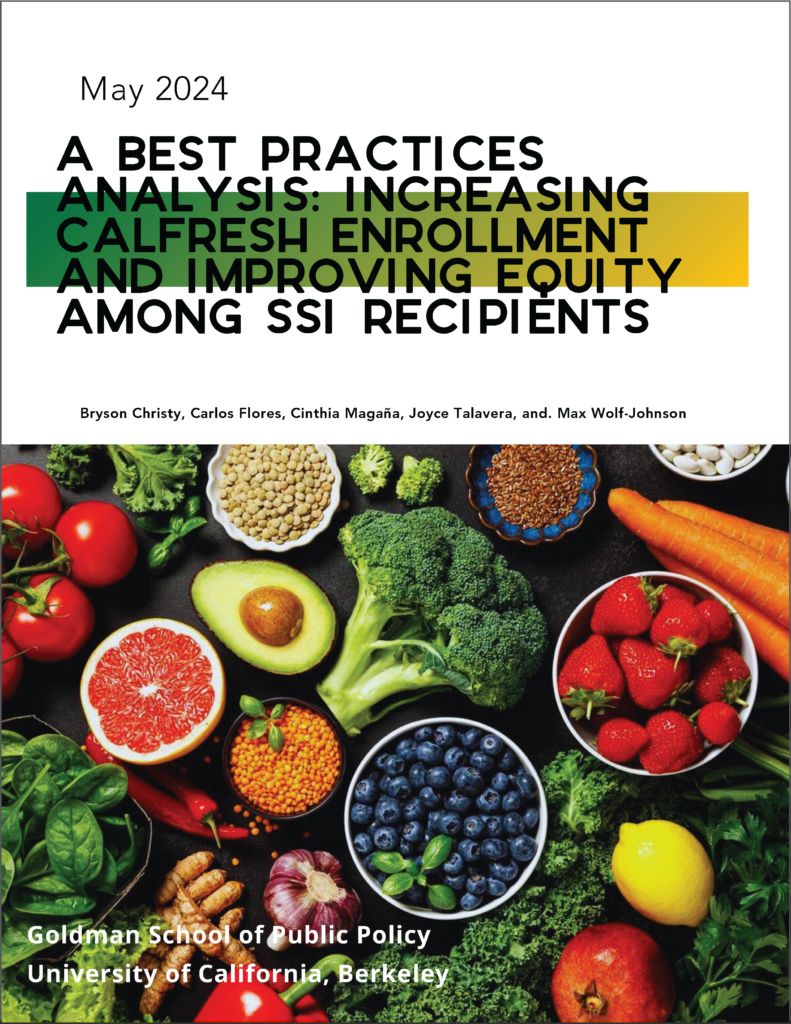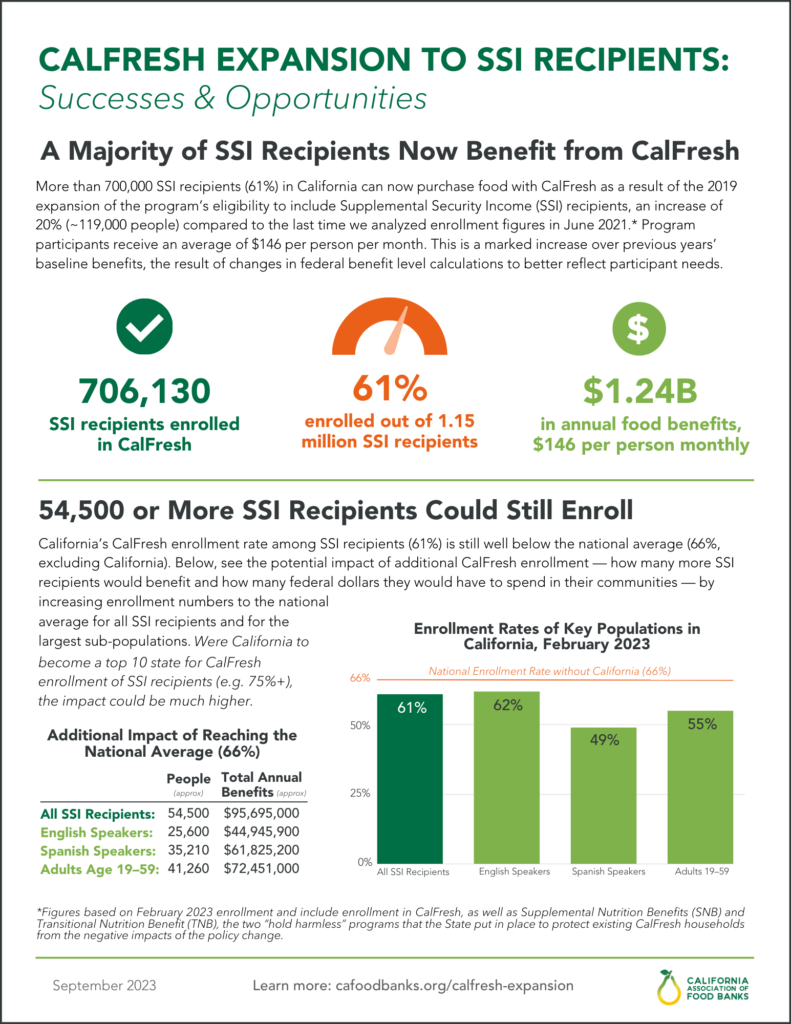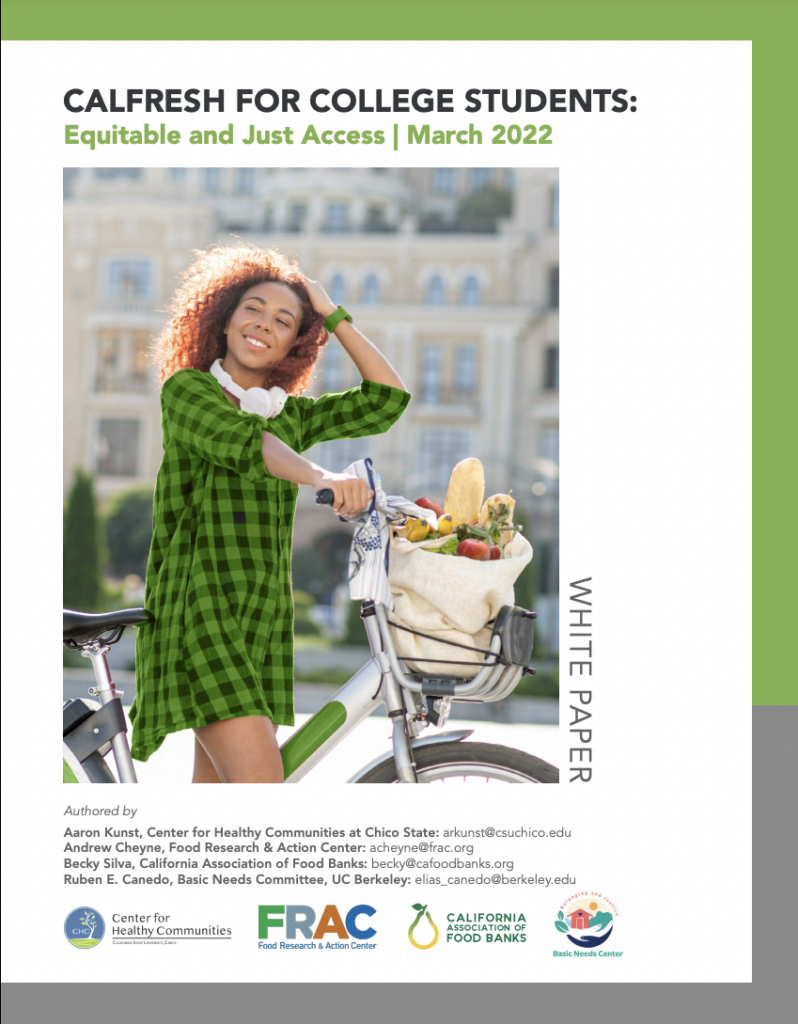California produces nearly half of the nation’s fruits and vegetables, yet more than 1 in 5 Californians — about 8.8 million — currently struggle with food insecurity. “Food insecurity” is limited or uncertain access to enough food to lead a healthy, active life.
Food insecurity has serious impacts on an individual’s well-being.
Food insecurity can certainly lead to hunger — the uncomfortable feeling someone has when they don’t have enough food. But even without the experience of hunger, food insecurity has been linked with poor school attendance and performance, lowered workplace productivity, and worse physical and mental health. Individuals experiencing food insecurity have to make tough decisions that no one should face. No family should have to decide between buying groceries or paying rent, no senior should have to choose between food and medicine, and no parent should have to skip a meal in order for their children to eat.
Since early in the COVID-19 pandemic, the U.S. Census Bureau has been collecting data on food hardship through a semi-regular Household Pulse Survey, which has enabled us to track changes and trends throughout the pandemic and recovery periods. Colleagues at Northwestern Institute for Policy Research used this data to calculate food insecurity estimates for overall households, households with children, and households represented by Black, White, and Hispanic/Latine participants.
California’s food insecurity rate: ~22% overall households, ~27% households with children
These numbers don’t tell the full story. Because of vast structural inequities, much higher levels of food insecurity are experienced by Black and Hispanic/Latine households, with White Californians experiencing food insecurity at rates lower than the general population.
请点击 这里 to explore food insecurity rates by race and changes over time. The dashboard is updated after each data release.
The expansion of CalFresh benefits to Supplemental Security Income (SSI) recipients in 2019 was the biggest increase in food program eligibility in decades, ending an inequitable policy of exclusion that had been in place for over forty years. The change impacted nearly 1.2 million SSI recipients. We’ve been tracking the remarkable progress toward enrolling this population.
View our interactive dashboard to understand how successfully the CalFresh program has reached SSI recipients statewide and at the county level, and to target future outreach efforts to under-enrolled populations.
Hunger is a symptom of underlying societal and economic struggles. In our Economic Indicators Dashboard we look at various economic and income-related measures to predict the potential need for food assistance. This dashboard is a work in progress that we will be continuing to update.
California food banks delivered almost 900 million pounds of food in 2023. Learn more about how we’re responding to California’s ongoing hunger crisis by checking out our recently published reports:


